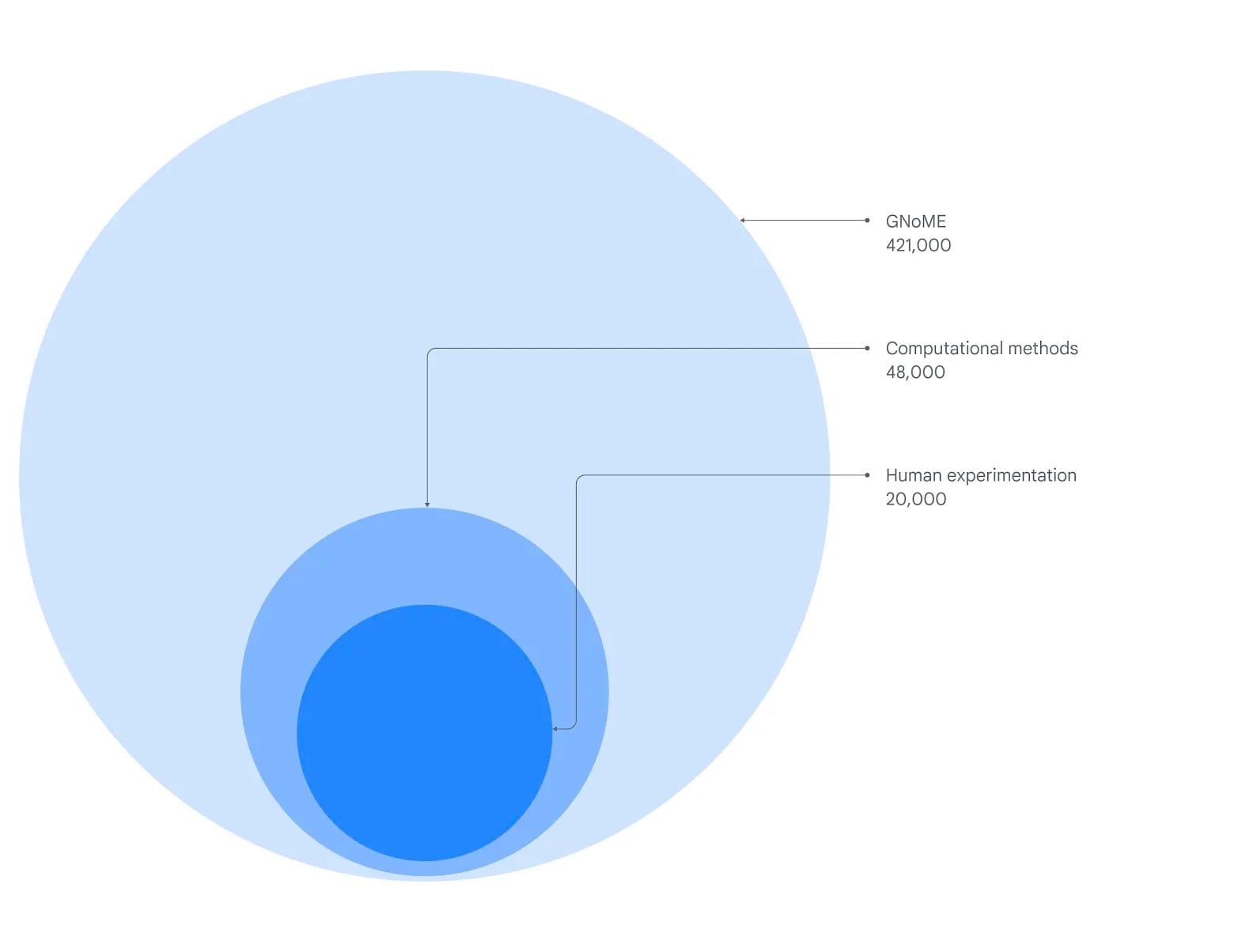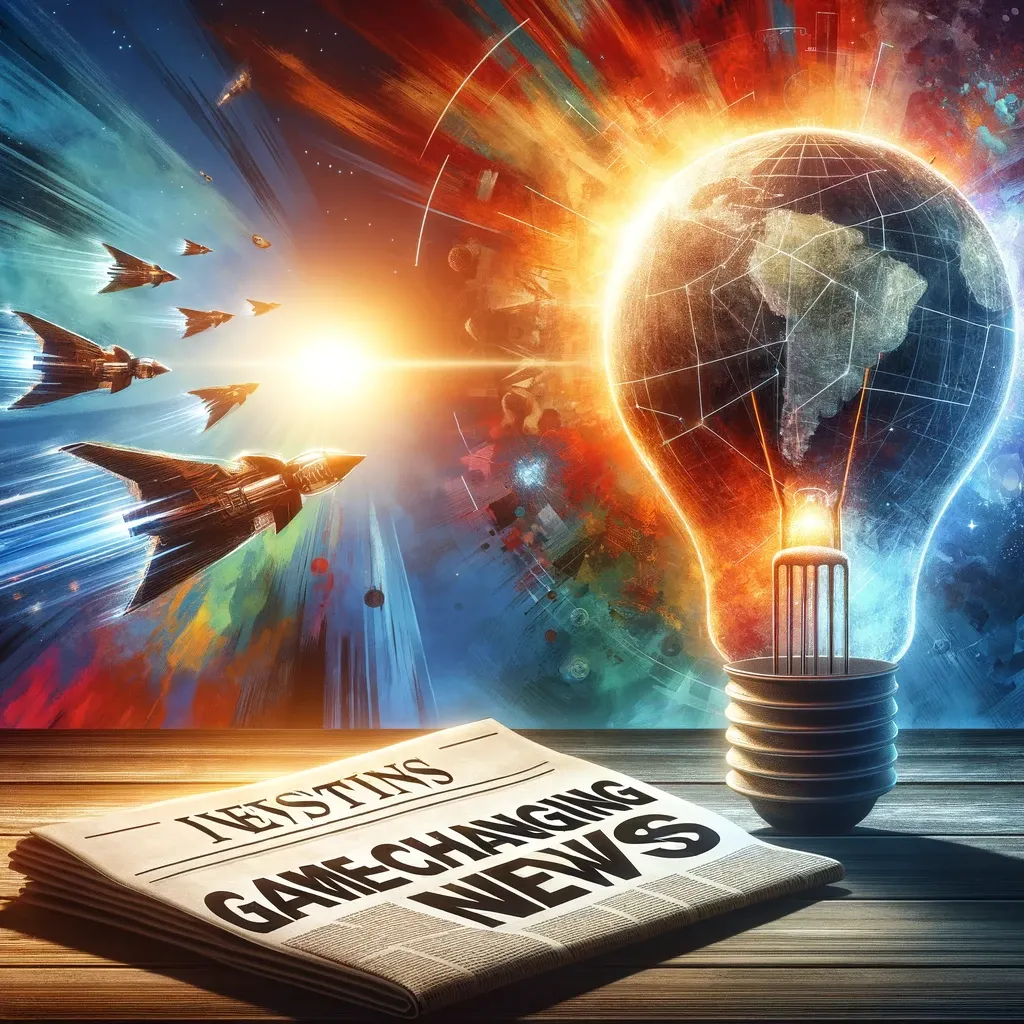Have you ever wondered how the materials in your smartphone, electric car, or solar panel came to be? The journey from a scientific concept to a tangible material is complex and fascinating. Today, this journey has been accelerated by a groundbreaking development from DeepMind. Their AI tool, GNoME, is not just a technological marvel; it's a harbinger of a new era in material science, discovering over 2 million new crystals.
Google AI researchers have made a breakthrough discovery using deep learning, revealing 2.2 million new materials, the most extensive and precise set of predictions to date. These materials are predicted to be stable and hold enormous potential for applications in batteries, solar cells, electronics, and beyond.
The Discovery
This groundbreaking development was achieved using a novel deep-learning tool called Graph Networks for Materials Exploration (GNoME).
GNoME is a sophisticated neural network that can predict material properties based on their chemical composition. By training GNoME on a vast dataset of known materials, researchers successfully predicted the properties of millions of previously unknown materials. Not all permutations predicted are viable, either possible with current technology or process. However, a hefty 380K materials were synthesized, and even more where validated independently by labs working closely with the research team at DeepMind.
Today, in a paper published in Nature, we share the discovery of 2.2 million new crystals – equivalent to nearly 800 years’ worth of knowledge. We introduce Graph Networks for Materials Exploration (GNoME), our new deep learning tool that dramatically increases the speed and efficiency of discovery by predicting the stability of new materials.
If THREE HUNDRED EIGHT THOUSANDS doesn't impress you, as a material engineer, I am shocked that you couldn't be shocked about that! Let me put that in perspective with a picture.

The Impact
This discovery offers tremendous potential for various industries and applications. Here are some highlights:
- Batteries: Development of batteries with increased energy density, longer lifespans, and enhanced safety.
- Solar cells: More efficient and cost-effective solar cell technology.
- Electronics: Smaller, faster, and more powerful electronic devices.
The researchers are actively working to synthesize and test the new materials in the lab. They are also developing new deep-learning tools to uncover even more possibilities.
Beyond Numbers: The Real-World Impact
The implications of this discovery are vast and diverse. Among the 2.2 million crystals, there are materials that could lead to breakthroughs in superconductors, revolutionizing computing and power transmission. Imagine batteries that charge faster and last longer, powering the next generation of electric vehicles. These aren't just theoretical possibilities; they're tangible innovations waiting to happen, all thanks to the predictive prowess of GNoME.
DeepMind isn't new to this type of approach to these extremely complex problems, and in particular, their altruism for the research community is the least appreciated by the general public. Their entire work is available for research. Meaning companies can actually put power to the mental on this research (I couldn't resist the pun!)
DeepMind's Foray into Protein Folding: Another Leap in AI Research
DeepMind's journey in revolutionizing scientific discovery doesn't end with materials. In a parallel and equally groundbreaking endeavor, their AI, AlphaFold, has made significant strides in solving the complex puzzle of protein folding.
This achievement, much like GNoME's in material science, is transforming biological research. AlphaFold's ability to predict the 3D shapes of proteins with remarkable accuracy is opening new frontiers in understanding diseases and developing novel treatments. The success of both AlphaFold and GNoME exemplifies DeepMind's commitment to leveraging AI for solving some of the most intricate challenges in science, underscoring the transformative potential of AI in diverse research domains.
A practical example of protein folding can be seen in the development of new drugs. Protein folding involves understanding the three-dimensional structure of proteins, which is crucial in biological processes. For instance, in drug design, knowing the exact shape of a protein that's associated with a disease can enable scientists to create a drug that fits perfectly into the protein, like a key in a lock. This specificity can increase the effectiveness of the drug while minimizing side effects.
AlphaFold, DeepMind's AI, has significantly advanced this process by accurately predicting protein structures. This ability aids researchers in quickly and precisely identifying target proteins for drug development, speeding up the process of creating new medications for diseases like cancer or neurodegenerative disorders. This technology represents a major step forward in personalized medicine and the treatment of complex diseases.
Implications for the Future
This research has significant implications for the future of materials science:
- Deep learning as a powerful tool for materials discovery: GNoME's success demonstrates the potential of using deep learning to unveil previously inaccessible materials.
- Data-driven approach in materials science: The research exemplifies the growing importance of data in materials science research.
- Collaboration in materials science: GNoME's development showcases the collaboration between Google AI researchers and materials scientists.

Conclusion
The discovery of 2.2 million new materials marks a significant breakthrough in materials science. This research holds immense potential to revolutionize various industries and improve our lives. As research progresses, the possibilities for innovation and advancement are boundless.
My mind still spinning at this!!




